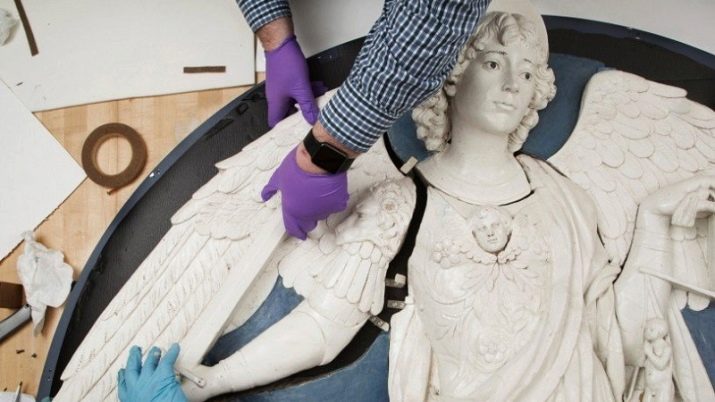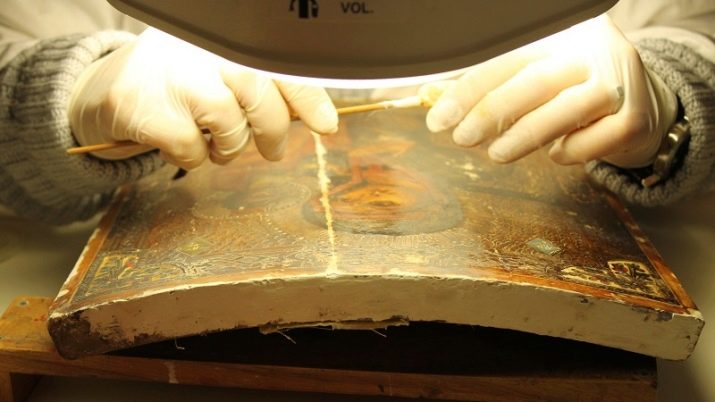Restoration architect: pros and cons, knowledge and training required

An architect-restorer is an excellent choice of profession for those who love not only to touch beauty, create and feel like a creative person, but also for those who like to reanimate art objects. This specialist helps to restore the building to its previous appearance, to revive what was supposed to destroy time.
Advantages and disadvantages
An architect-restorer is a qualified specialist who can be engaged in architectural design, is able to carry out all work regarding space-planning and interior solutions.
A dangerous delusion awaiting those who are still engaged in the choice of a profession, to think that it all consists of pure creativity. This is not true: an architect-restorer is engaged in both creativity and technical work. Moreover, the latter component is no less than creativity.

Profession benefits:
- good ones specialists in this field are very valuablethey receive a lot of orders and do not complain about the demand and salary;
- the ability to work not only in the office (many specialists work remotely, combining such activities with field visits);
- there is little routine in this profession, each object is like a new book for a writer, each time it is a completely different story;
- this one is perfect profession for people who want a union of technology and creativity.
Disadvantages of the profession:
- finding a job in a small town can be difficult;
- you definitely need to have a vocation, inclinations, abilities for this profession;
- for very sociable people, it can be a burden - a specialist works with a project, contacts with colleagues are minimal.
The first message for obtaining such a profession is the already existing base.Most architects are people who already have an art education.

Knowledge and skills
The requirements for a person claiming to be an architect-restorer cannot be called modest. He should be a person with a broad outlook, with good analytical skills, the ability to build hypotheses and work with them.
A good quality for a restorer is creativity and strong intuition.
Professionally significant skills, knowledge, qualities:
- outstanding creativity;
- developed artistic taste;
- knowledge of art history, cultural studies;
- structured memory;
- developed spatial, critical thinking;
- willingness to study, master new professional programs;
- good concentration.
Already in the course of the practice of an architect-restorer, as a rule, specialization appears. It is difficult to equally successfully restore an 18th century palace, furniture from the times of Nicholas II and buildings from Stalin's times. Each specialist has to decide on the narrow area that will become his specialization.

Responsibilities
The main function of an architect-restorer is the restoration of architectural monuments. The specialist painstakingly studies archival materials, develops and maintains projects that will recreate the general appearance of the building. The architect takes part in the actual restoration work. His participation is also expected in deciding how the restored building will be used. It should be noted that modern restoration is based on a strictly scientific approach. The challenge for professionals working in the industry is to understand the idea of who built a particular building., correlate this concept with the technical capabilities and building materials of that era.
The demand for restoration is growing today, but the region where the specialist will work is very important. Until now, architects and restorers are akin to piece goods. Nevertheless, an architectural and historical object, part of the cultural heritage, falls into their hands. The job description of an architect-restorer describes the list of tasks that an employer can involve him in.
The restoration work involves a number of stages:
- long, detailed research work in library funds and archives;
- study of the building, carrying out thorough measurements, analysis of the structure of walls, roofs, foundations, etc .;
- drafting a project;
- organization of restoration work with the implementation of the functions of a manager.
Career dynamics in this profession requires hands-on experience. As a rule, several specialists work at large facilities. And if a person becomes the leader of this group, this can really be perceived as a great career achievement. Many architects-restorers have academic titles, degrees, and they often combine their practical activities with teaching.

Education
The average applicant has a choice of where to apply. For those who want to play it safe and understand whether their choice is really correct, it makes sense to graduate from college first. Studying at the art and graphic departments, practice make it possible to understand whether the student has chosen the direction. And with such a base it is easier to enter a university.
What kind of university could it be?
- Kazan Federal University.
- Russian Academy of Painting, Sculpture and Architecture named after I. Glazunov.
- MGHPA them. S. Stroganov and others.
If someone romantically calls the work of an architect-restorer "magic", then in a sense, they will be right.
Thanks to the painstaking work of this specialist, the lost works of art take on their former appearance, beautiful and historically valuable buildings have a new countdown of their existence.







